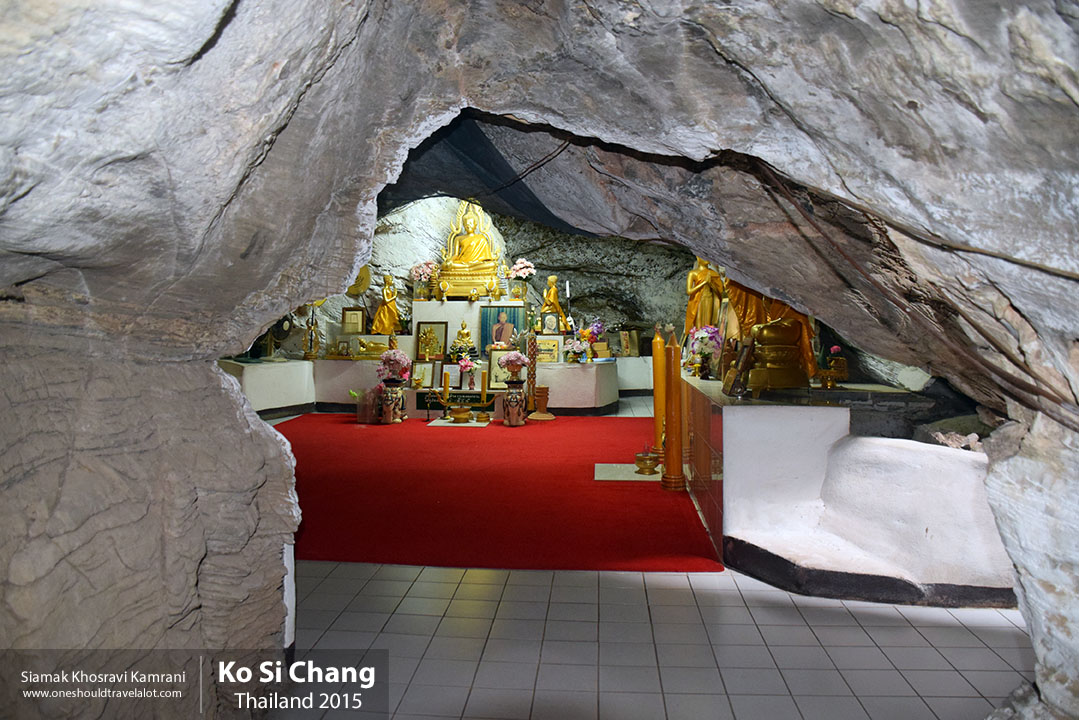Discovering the Enchanting Tham Lot Cave in Thailand
A Photographer’s Journey into Thailand’s Mystical Cave
As a photographer with an insatiable thirst for exploration and adventure, my travels have taken me to some of the most breathtaking places on earth. Yet, nothing could have prepared me for the enchanting experience of visiting Tham Lot, a cave nestled in the heart of northern Thailand. With my camera in hand and a sense of wonder in my heart, I embarked on a journey that would allow me to capture the essence of this mystical place, while immersing myself in the rich culture and natural beauty that surrounds it.
First Impressions of Tham Lot and Its Surroundings
Located in the picturesque Pang Mapha district of Mae Hong Son Province, Tham Lot Cave is a natural wonder that draws adventurers and nature enthusiasts from around the globe. The cave itself is part of a vast limestone karst system, sculpted by the forces of nature over millennia. As I approached the cave, the lush greenery and rugged terrain painted a serene and majestic landscape, creating a perfect backdrop for my photographic journey.
The standard of living in this region, while simple, is imbued with a profound sense of contentment and harmony with nature. The local people, predominantly of the Shan and Lisu ethnic groups, lead lives deeply connected to their surroundings, maintaining traditions and customs that have been passed down through generations. The air was filled with a palpable sense of tranquility, and the pace of life was refreshingly slow, offering a stark contrast to the bustling cities I had visited before.
Entering the Heart of Tham Lot
As I ventured into the cave, the air grew cooler, and the faint sound of flowing water echoed through the darkness. Tham Lot is renowned for its subterranean river, which stretches over a kilometer through the cave system. Guided by a local expert, I boarded a bamboo raft and began my journey into the heart of the cave.
The raft ride was nothing short of magical. Stalactites and stalagmites, formed over thousands of years, adorned the cave’s ceiling and floor like natural sculptures. The interplay of light and shadow created an otherworldly atmosphere, and I found myself in awe of the sheer beauty and grandeur of this subterranean wonder. As my camera clicked away, capturing the intricate formations and the play of light on the water, I couldn’t help but feel a deep sense of gratitude for the opportunity to witness such a marvel.
The Cultural Significance of Tham Lot
Tham Lot is not just a geological wonder; it is also a site of immense cultural and historical significance. The cave has been inhabited by humans for thousands of years, and evidence of this ancient habitation can be found in the form of prehistoric cave paintings and artifacts. These remnants of the past offer a fascinating glimpse into the lives of early humans who sought refuge within the cave’s protective embrace.
One of the most striking features of Tham Lot is the presence of teakwood coffins, estimated to be over a thousand years old. These coffins, believed to be crafted by the Lawa people, are perched high on ledges within the cave, accessible only to the most intrepid explorers. The sight of these ancient relics, silhouetted against the dimly lit cave walls, evoked a sense of reverence and curiosity, prompting me to delve deeper into the history and culture of the region.
Immersing in Local Culture and Traditions
Outside the cave, the surrounding villages offered a rich tapestry of culture and traditions waiting to be explored. The Shan people, known for their hospitality and warmth, welcomed me with open arms. Their traditional wooden houses, elevated on stilts, dotted the landscape, and the air was filled with the fragrant aroma of local cuisine.
The Shan cuisine, a delightful blend of flavors and textures, was a highlight of my visit. I savored dishes like “khao soi,” a spicy coconut curry noodle soup, and “sai ua,” a flavorful sausage infused with herbs and spices. Each meal was a culinary journey in itself, offering a taste of the region’s rich culinary heritage.
Capturing the Essence of Tham Lot
My days were spent exploring the cave and its surroundings, capturing the essence of Tham Lot through my lens. The interplay of natural light within the cave created endless opportunities for stunning photographs, each shot telling a story of its own. The serene landscapes outside the cave, with their lush greenery and tranquil rivers, provided a perfect contrast to the dark and mysterious interior of Tham Lot.
One of the most memorable moments of my journey was a visit to the nearby Pha Mon village, home to the Lisu people. Known for their vibrant traditional attire and intricate handicrafts, the Lisu community offered a glimpse into a way of life that has remained largely unchanged for centuries. I was fortunate enough to witness a traditional dance performance, where the rhythmic movements and colorful costumes brought the cultural heritage of the Lisu people to life.
Reflecting on the Journey
As my time in Tham Lot came to an end, I couldn’t help but reflect on the profound impact this journey had on me. The cave, with its awe-inspiring beauty and rich cultural significance, had offered a unique blend of adventure and introspection. The warmth and hospitality of the local people, coupled with the breathtaking landscapes, had left an indelible mark on my heart.
Tham Lot is more than just a destination; it is an experience that immerses you in the natural and cultural wonders of northern Thailand. For a photographer and explorer like myself, it was a journey that offered endless inspiration and a deeper appreciation for the intricate beauty of our world.



